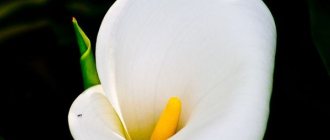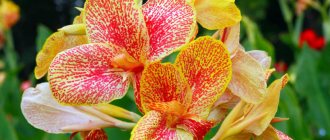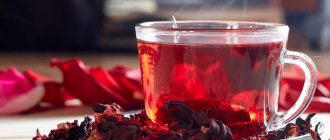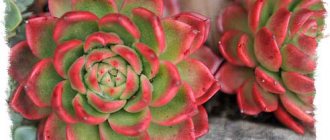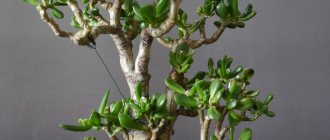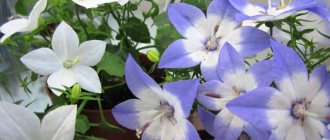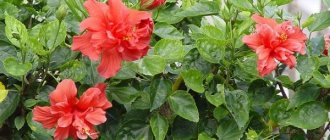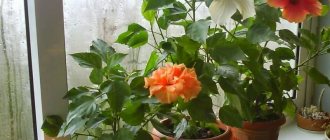On windowsills and indoors you can see an interesting plant with large flowers. This is a hibiscus, it is also called the Sudanese (Chinese) rose. Most often on Russian windows there is a bush decorated with large red flowers. Bright flowers last only two days, their beauty is remembered for a long time. However, some gardeners refuse to grow such a marvelous flower because of its second name. Hibiscus is the flower of death, why is it called that? You can learn more about this from our article.
Hibiscus (Chinese rose) - description
Hibiscus, also known as Chinese rose, is a popular crop among most gardeners. The plant is considered an excellent option for those who are just starting to garden and grow indoor flowers and flowers in the garden. A characteristic feature of the flower is its unpretentiousness and ease of cultivation. This species has many representatives, which are distinguished by the shape of flowers and leaf blades, dimensions, color, and a number of other criteria.
It all depends on the species; hibiscus can be either annual in the form of single flowers or perennial shrubs that can decorate any garden. In nature, the Chinese rose can reach 20 m in height and 3–5 m in width. A very important specific feature of the plant is considered to be resistance to the negative influences of nature, including sub-zero temperatures. In winter, hibiscus can tolerate frosts down to -20? C. The only thing you need is to organize a film shelter.
In nature, hibiscus reaches 20 m in height and 3–5 m in width.
Street hibiscus: does it bring death?
Chinese, Sudanese rose is grown in gardens and on the streets of areas with a very warm, tropical climate. Those who believe in superstitions and signs are sure that the street plant also brings death to the owners of those homes near which this shrub grows.
Many people believe that the omens related to indoor hibiscus also have a negative effect when cultivating Chinese roses in gardens, front yards and on the street. In addition to the fact that the Chinese rose “pulls” the energy of the owner of the garden, it is rumored to be endowed with the ability to shorten the life of its owner. This statement is unsubstantiated and there is no point in believing it.
Hibiscus: origin and distribution
Researchers have discovered beautiful, colorful flowers in the tropical forests of Asia for the first time. In the wild, hibiscus grows as shrubs reaching three meters in height. The Chinese rose is also widespread in South America, especially in Argentina, where these flowers are usually grown in almost every home.
Hibiscus was brought to Europe only in the 18th century, where it became fashionable and was grown in greenhouses and homes. Despite the fact that many superstitions are attached to it, its care and colorful flowering evoke only positive reviews from gardeners. Why is hibiscus the flower of death? The answer to this question will be discussed below.
Botanical description
According to the scientific classification, hibiscus belongs to the evergreen shrub plants of the Malvaceae family, which can be annual or perennial.
The plant has petiolate, incised leaves. The fruits are formed into a capsule, which breaks into 5 parts; inside it there are pubescent or smooth seeds in large quantities. The brightest and most beautiful part of the plant is the hibiscus flower (photos of various colors are shown below).
For growing at home in European countries, a greenhouse type of hibiscus called the Chinese rose (lat. Hibiscus rosa-sinensis) is used. The Malay Archipelago is considered its homeland and has flowers of different colors and shapes. Over the past 20 years, geneticists have been able to develop many new varieties of Chinese roses, which flower growers rightfully consider one of the main decorations of many home flower beds.
You may be interested in: How to grow thuja from cuttings
Meaning in the culture of different nations
Hibiscus has a certain meaning in the culture of many peoples. Natural magic expert Ellen Dugan writes about its magical properties in her book “Magic in Your Garden. The magical properties of plants and ways to work with them.” Here's what you should know when purchasing a Chinese rose:
- In Haiti, hibiscus is a sacred flower. You will find his image in national symbols. The Chinese rose is woven into wreaths that are used to honor dear guests on the island.
- The national currency of Malaysia contains an image of a hibiscus, where the plant is also considered sacred.
- The Chinese believe that when a hibiscus bush blooms in a house, a happy wedding will soon be celebrated there.
- Brazilians wait for the Chinese rose to bloom with excitement, because this good sign announces the birth of children in the family.
- Indian brides decorate their hair with Chinese rose flowers before the wedding ceremony, as in India they are considered a symbol of innocence.
The rose bush lives for a very long time (up to 30 years), blooms for seven months a year, delighting the eye with bright colors.
Folk signs associated with hibiscus
One of the most common popular opinions is that the plant has the ability to expel a man from the family. However, in India it is considered a flower that brings family happiness. During wedding ceremonies, the Chinese rose, along with other representatives of the malvaceae, is woven into wreaths and garlands that the newlyweds give to each other.
Malaysia is a country where the population worships hibiscus. Not only is its image present on the state flag, but there is also a park of these marvelous plants. It numbers at least two thousand bushes of these flora representatives. Local residents often hold wedding ceremonies in this park.
Important! Hibiscus, according to popular belief, is capable of establishing peace of mind and reviving the love energy in the bedroom of spouses who have cooled down with passion over time.
In Argentina, the Chinese rose is very popular and revered. Almost every house and building in Argentina has at least two pots with a beautiful plant. If there is no exotic rose in the apartment, this causes bewilderment and hostility of people who often visit such a house. Argentines consider the bright red inflorescences to be a symbol of the purity and kindness of the soul.
If you decide to come to Haiti or visit Hawaii, you will be greeted by beautiful long-haired girls, whose hair is always decorated with a scarlet flower. A garland containing Chinese rose flowers will be joyfully placed around your neck. In this way, the inhabitants of these islands express their respect and hospitality.
Attitude to flowers in Europe
In general, the root of negative superstitions regarding hibiscus in Europe, since due to its scarlet color they began to associate it with death.
Allegedly, the petals are actively used by witches to prepare a potion that brings about the crown of celibacy. In European countries, the shrub is even called burnet, since it can supposedly provoke blood diseases (most likely this is again due to the color). There is also a widespread belief that a single woman who has a Chinese rose in her house will soon begin to enjoy unprecedented popularity with the opposite sex, but it will not be possible to create a serious permanent relationship while the pot of burnet is in the house.
Probably due to the ability of the Sudanese rose to draw energy from those around it, it is actively used to decorate hospitals, clinics and other medical institutions, where it feels great and blooms in lush colors. Naturally, this position is also not supported by any scientific facts.
Pruning, propagation
Pruning is an important component when caring for Chinese roses. Every year after flowering, usually in the fall, shoots need to be pruned to encourage branching. In addition, flowers appear only on young shoots, so this operation lays the foundation for abundant flowering in the next season. In the spring, you can pinch the shoots again, including young ones. It is also necessary to regularly remove wilted flowers.
Chinese rose is propagated by seeds and cuttings. When propagated by seeds, the plant can bloom only after 3-4 years.
It is much easier to propagate the plant from cuttings. You can use the shoots remaining after pruning. Rooting occurs quite easily at any time of the year, provided there is sufficient heat and light. Cuttings take root well in water; it is better to cut off the lower leaves, leaving one or two at the top.
Chinese rose cuttings gave luxurious roots in water
When the roots grow, plant the cuttings in small pots.
Spider mites, scale insects, and mealybugs happily eat Chinese roses. At the first suspicion of pests, it is necessary to treat the plant with insecticides.
Popular signs
- If a Chinese rose blooms during a period uncharacteristic for this process, then it is believed that someone in the house will soon die. To avoid this, the plant must be immediately disposed of, or, more precisely, burned.
- Hibiscus negatively affects the health and life of its owner. That is why it is not recommended to install a flower in the bedroom. It is believed that after the death of the owner of the plant, the Chinese rose blooms powerfully and profusely. This is explained by accumulated energy.
- If the flower has dropped all its leaves, this indicates that the residents of the house need to go to the hospital. Thus, hibiscus warns that someone in the household has health problems.
- The Chinese rose helps to attract men to unmarried girls. However, at the same time, the flower drives the male sex out of the house. This suggests that the girl can’t expect happiness.
- If hibiscus appears in a house where an established married couple lives, then the plant becomes a source of discord and unrest and, as a result, people will be unhappy. The “flower of death” is used to make a crown of celibacy. However, history is silent about who is doing this and how.
Rules of care
The plant should be watered abundantly, but not often, making sure the soil dries out. It is recommended to apply fertilizing in doses: in the spring - potassium-phosphorus, in the summer during the flowering period - complex, but the flower does not like nitrogen-containing fertilizers.
The most important factor that ensures abundant flowering is proper pruning. Hibiscus should do formative pruning regularly; every year, immediately after flowering, the tip of the stem must be trimmed so that young side shoots can begin to grow. It is on them that buds and flowers will appear next year. It is also recommended to pinch out all shoots (even young ones) in early spring. The tops that appear during the growing season and grow parallel to the trunk should be trimmed regularly.
By following all the rules, every gardener will be able to grow a Chinese rose at home in order to admire how hibiscus blooms in the summer season.
Why do omens not come true?
During the Soviet era, hibiscus (Chinese rose) was a common and popular houseplant and, most likely, it was the unpleasant moments associated with the flower that caused the bad omens. However, hibiscus continued to remain popular with many gardeners, despite beliefs and claims that the Chinese rose brings misfortune and harm.
Of course, we should not classify all the signs associated with hibiscus as folk, because most of them came to us from Europe, where it was widely believed that the Chinese rose brings misfortune, separates families and separates people.
Quite a large number of people say that hibiscus is the flower of death, why has no one died from it yet, and is it possible to throw out a Chinese rose if you already have one in your house? Let's check if this is true.
Some signs say that when the hibiscus blooms, illness or death will certainly befall the household, at the same time, an indoor rose pleases with its flowering, which is why people grow it at home.
If you believe other signs, the flowering of hibiscus in late autumn and early spring leads to illness or death of the owners. The Chinese rose blooms from late spring to autumn, also at the beginning of winter. It’s interesting that a Chinese rose at home is a bad omen, but this belief applies to all indoor plants, and it’s up to you to believe it or not.
The Chinese rose is also called an energy vampire, and many believe that hibiscus takes energy from its owners during flowering. There is another point of view: the Chinese rose absorbs negative energy and in return gives out positive energy when it blooms. By the way, hibiscus also received the second name “vampire” because of its bright scarlet blooms.
Advantages of the plant
0
Source:
If you are indifferent to signs and superstitions and are not used to blaming events in your life on a neighbor with an evil eye, a black cat who crossed the road and a blooming Chinese rose, then you not only can, but you need to have this plant at home. Moreover, it:
- pleases with beauty and aesthetics;
- makes indoor air cleaner;
- easy to care for;
- smells nice.
As for impressionable natures, with an unstable psyche and simply fatalists, it is better for them to choose other types of green plants to decorate their homes.
The end of the white streak in life begins with the death of the hibiscus
Another superstition related to why the Chinese rose is the flower of death. Perhaps this is explained by the fact that the transience of flowering provokes the appearance of sad thoughts about the natural fading of the beauty of any living creature.
But it is worth remembering that this is the same biological process that occurs according to its own rules. One bud of an ordinary hibiscus usually blooms for no longer than one day. Fortunately, others come to replace it, and an adult plant produces several flowers at the same time. And if the right conditions are created, the hibiscus will bloom constantly.
Bright and colorful "flower of life"
Correcting mistakes and following simple care rules allows gardeners to successfully grow this plant at home. That’s why many of them leave positive reviews about the “flower of death” hibiscus on the websites of ornamental plant lovers. Why it was called that was described above.
Scientists advise not to believe in bad omens and stories about this beautiful flower. After all, all problems with its flowering or wilting are explained by completely natural reasons. Proper care, watering, pruning and fertilizing will prevent the death of the flower and not worry about the fate of its owner in the future.
Source
Popular beliefs
There is a popular belief that the flowering of hibiscus is a very dangerous time for all household members. The flower spreads negative energy, drains vitality and health from people, and sows anger and irritation throughout the home. House occupants may become seriously ill or even die. It is believed that after sending a person to the next world, the plant begins to bloom especially abundantly and luxuriantly, since it has been imbued with the energy of the owner. It is said that this is the reason why hibiscus plants do so well in hospitals.
According to another version, danger threatens only if the Chinese rose blooms at the wrong time, for example, in winter or mid-summer. It is even recommended to burn such a “wrong” flower. The usual flowering period is from May to November.
The blackened leaves of the burnet (another creepy name for the plant) also warn the owners of an impending serious illness. Everyone living in the house needs an urgent health check. An alarming sign is if all the leaves have fallen off.
Fallen leaves - to a serious illness
Another sign that explains why the Chinese rose is the flower of death tells us that discarded leaves portend a serious illness or misfortune. It is not possible to refute or confirm this sign, since it was formed many generations ago. According to legend, without leaves, hibiscus does not receive the necessary energy and draws it from the people living next to it. At the same time, there is an opposite opinion, which is that a withering plant takes on the illnesses of family members, thereby protecting them.
In any case, all evergreen plants gradually renew their green mass by getting rid of leaves. There's nothing scary about it. Although if the growing leaves begin to turn yellow or black, then this is an alarm signal. It is necessary to examine the hibiscus for the presence of pests and, if necessary, take measures to treat it.
Any process can be explained from a scientific point of view, so you should not torment yourself with beliefs and signs. But if you are really tormented by premonitions and suspicions, then it is better to consult a doctor to either calm yourself down or prevent a terrible disease.
Associated with hibiscus flowering
The following beliefs are associated with the flowers of the plant:
- Hibiscus is believed to be a lover of negativity, which is why it grows well in hospital hallways and administrative offices. In fact, the flower develops where there is a lot of light and large windows.
- Some people claim that hibiscus blooms before the death of the one who grows this plant. However, those who have had a Chinese rose for many years refute this opinion. The plant does not contain toxic substances or toxins, and hibiscus tea is brewed from its flowers.
- Untimely flowering of a plant can lead to death. Girls of marriageable age should not be given hibiscus flowers; she may not realize her dream. Blooming hibiscus is considered a "husband".
Diseases and pests of Hibiscus domestica with photos and their treatment
Chinese rose is a strong and strong plant that can easily withstand various adversities in the form of harmful insects and diseases.
Rarely, scale insects, spider mites and aphids appear on Hibiscus leaves. You can get rid of them with regular spraying, treatment with soapy water and special preparations. Insecticides are recommended for use in difficult cases. Then Actellik, Aktara and other pest control products are suitable.
Among the diseases, chlorosis and rot can be dangerous. In case of chlorosis, it is recommended to regularly fertilize the plant with special fertilizers, and also rinse it well in the shower with warm water. The sick flower is kept in quarantine until the situation improves.
If a rot disease occurs, you need to remove the Hibiscus from the pot, remove all damaged parts and treat it with fungicides. After this, the flower is transplanted into a fresh substrate.
Also, when growing Hibiscus, the following difficulties may arise:
- The falling of leaves and buds is a draft or a sudden change in living conditions.
- Stretching of stems, yellowing of leaves - lack of light. It is necessary to move the plant to a brighter place or illuminate it with a lamp.
- The leaves curl, the tips dry - dry air.
- Leaves become pale or yellow due to watering with hard water or iron deficiency. Watering should be done with soft, settled water, and the flower should also be fed with special preparations containing iron.
Often, if the rules of care and maintenance conditions are violated, the Hibiscus stops blooming. Most often this is due to:
- Lack of light or too intense lighting.
- Lack of nutrients.
- Lack of cool wintering and proper plant rest.
- Dry air and irregular watering.
- No pruning.
How to make Hibiscus bloom at home:
- Provide the plant with good lighting, warmth and regular watering.
- Check the pot. If the selected container for planting is too spacious, you may need to transplant the flower into a more suitable container.
- Feed the plant with special preparations containing potassium, magnesium and phosphorus.
- Provide cool rest from autumn to late winter.
- In early spring, trim all old branches to stimulate the growth of young shoots and increase bushiness.
If all conditions are met and the plant receives everything it needs for growth, then it will certainly delight with an abundance of bright and large flowers.
A fading flower takes away all troubles
Many people believe that sick pets and fading flowers of indoor plants take on the illness of one of the family members or ward off trouble from the home.
People have always attached great importance to the mystical connection between man and plant. This is reflected in many legends and traditions that have survived to this day. For example, in Western Europe, it has long been believed that young trees growing on the roof protect the house from thieves and lightning. Someone is sure that a blooming hibiscus shares all the hardships with a person.
In Belgrade they love it when the hibiscus bush blooms in front of the house
Lack of flowering: reasons
Reasons why hibiscus does not bloom:
- Incorrect transplant. The pot chosen is too large, so all the plant’s energy is directed to the growth of the root system.
- Little light in the room. The flower is located in the corner of the room and the sun's rays do not illuminate this place well.
- Lack of nutrients. To flower, ornamental crops need to gain green mass in the spring and then begin to form buds. This requires potassium-phosphorus supplements. If the plant does not receive them, there will be few or no flowers.
- No pruning was done for flowering.
Some species drop their buds if they are moved or moved in preparation for flowering. If such a feature of a flower is noticed, it is necessary to locate it in a permanent place and move it only when the plant is dormant and there is no sap flow.
If the shoots of a young plant are severely pruned, in the spring it will not form buds, but will devote all its energy to the growth of new branches, so hibiscus up to 5 years old are pruned little by little, only to stimulate growth.
Pests may settle on the plant, causing it to lose its vigor. After damage to the leaf blades, the movement of nutrients to the bud growth point is disrupted. If they have already formed at that time, the plant will shed them. If not, he will pause tying to recover from the damage received.
Spider mites, scale insects, and aphids are the most common insects that suck juices from leaves and shoots, after which they take a long time to recover. The most important thing is that pests can multiply within 1 to 3 days, so you need to carefully inspect the plants every day in order to take timely measures and spray them with insecticides.
Explanations of scientists
According to biologists, the unusual behavior of the plant (violent flowering and wilting) is evidence of unfavorable changes in the environment and microclimate in the room where the hibiscus is located. It can be caused by the appearance of mold from dampness or drying out due to high dry air, harmful emissions from nearby industrial enterprises.
Scientists also explain the myth that a withering plant becomes a vampire by natural causes. The stems and leaves of hibiscus have high absorbent properties, which is why they literally absorb any harmful (even radioactive) air particles. Therefore, the unexpected fall of green mass indicates a critical amount of harmful radiation. Therefore, instead of getting rid of a diseased plant, it is better to find the cause of the unfavorable conditions and begin to eliminate it.
Biologists do not advise sounding the alarm about the fall of several leaves, since this evergreen plant is capable of regularly renewing its crown, and this is a natural process inherent in nature itself. So the answer to the question of whether it is true that hibiscus is the flower of death can be absolutely answered - no. It is better to find out what beneficial properties such a plant has.
Why graft hibiscus
Chinese roses are grafted in order to collect several varieties of flower stalks on one root. The result is a multi-flower with red peduncles on top, white on the side, and yellow on the back.
As practice shows, vaccinations do not always take root in beginners. Most often this happens because the slices are shifted due to loose winding. Sometimes the cuts grow together, but the rose continues to bloom in the same color. The mistake is that the buds are not removed from the rootstock and continue to dictate the color of the mother plant.
There are two main ways to graft a Chinese rose:
- Copulation - connecting oblique cuts with subsequent winding.
- Budding - inserting a bud into a prepared place on the rootstock.
It is important that the rootstock and scion are the same thickness. In this case, all layers of the cambium will coincide and the graft will take root. If the thickness of the cuttings does not match, they are aligned along one edge - right or left.
Is it possible to plant hibiscus in the garden?
Hibiscus came to us from afar, and our climate is not very suitable for it. But, thanks to breeders, varieties have been developed that are suitable for our latitudes. These specimens do not exceed three meters in height and can withstand frosts of up to 30 degrees.
Of course, in order to survive the winter, the plant will need to be helped - either by covering it well or bringing it into the house - after all, it’s a rare winter in Russia without the temperature dropping below thirty degrees.
There are several types of hibiscus that can be grown here, but the principle of care is the same for all. First, you need to choose a suitable location. The plant should be protected from bright sun. There should also be no threat of strong winds. Secondly, the soil should be quite loose and nutritious. Timely watering is necessary as the soil dries out.
Different species have their own care requirements. And a kind of pruning, and weeding, and mulching. But any species requires insulation for the winter, so don’t forget to try in the fall.
Chinese rose can be grown from seeds and cuttings. It is better to sow seeds in mid-winter. Do not forget to spray future bushes in a timely manner. They can be planted in open ground only when the threat of frost has passed.
When cutting, you need to remove almost all the leaves from the shoot and place it in water. When fairly long roots appear, you can plant the hibiscus in a pot with peat, from where you can transplant the bush into open ground when the plant gets stronger.
And don’t forget, young plants do not tolerate frosts so well, so insulation measures will have to be thought out especially carefully in the first year.
Reviews from those who grow hibiscus
Beginning flower growers can safely choose this representative of the flora for their first experience, because it is famous for its unpretentiousness. Even if you missed watering the flower, it will not dry out or wither. And the annual abundant flowering will certainly please its owner.
More experienced gardeners who have several types of hibiscus in their collection note that a houseplant can be grafted and get amazing bright flowers with a unique color. There are many websites on the Internet dedicated to floriculture, where flower growers note that the popularity of the Chinese rose is justified by its unpretentiousness and safety.
The rooms in which the plant stands must be thoroughly ventilated during the day, because at night it intensively saturates the room with oxygen. Many plant growers note that next to an ornamental deciduous tree one feels an extraordinary freshness. The inflorescences do not have a distinct odor, although they do have a fresh aroma.
The exotic shrub is characterized by the rapid growth of side shoots, which is why it instantly loses its decorative appearance. Often the plant stretches, causing it to lose its leaves; this is due to insufficient lighting. It is impossible to restore the decorative appearance of a tree. It is better to take a cutting from a dying tree and then plant it again. Experienced gardeners advise cutting off excess shoots as soon as the seedling reaches a height of 45-50 cm.
If a Chinese rose is not replanted for more than three years, it begins to grow a trunk, flowering becomes rare or stops altogether, and the new leaves that appear are small and inconspicuous.
According to feng shui
Chinese rose influences the movement of Qi energy, which is responsible for people's health. Feng Shui experts recommend growing a flower with white inflorescences for hot-tempered people. The element of fire predominates in the plant. The flower extinguishes outbursts of anger, suppresses anxiety and nervousness.
If you place a pot of the plant in your office, hibiscus will help concentrate your energy.
Photos in the interior
The Chinese rose is one of the most beautiful indoor plants, which, with good care, can become the real pride of a gardener and the pearl of a home collection.
Beneficial properties of hibiscus for humans
People from the East do not consider hibiscus a flower of death, since it carries positive energy and enriches everyone around it with it. A blossoming Chinese rose is somewhat reminiscent of a flame of fire, which brings courage, activity and strength. From the point of view of Feng Shui, the Chinese rose attracts goodness into the house, protects residents and absorbs bad energy.
From flowers you can prepare medicinal decoctions that relieve ailments, give the skin elasticity and youth, and also cure ulcers and boils. Tea prepared from this flower saturates the body with anthocides. This leads to normalization of pressure, strengthening of vessel walls, and restoration of gastrointestinal functions.
IMPORTANT If you take hot tea, a sharp increase in blood pressure occurs, while cold tea reduces blood pressure.
Tea also strengthens the immune system, cleanses the body of toxins and waste, and has antibacterial and bactericidal properties. Anyone can grow this flower, since there is no allergy from it, and the nectar of the flower is a good aphrodisiac that will not only decorate the bedroom, but also strengthen family relationships.
Choosing an effective propagation method
The choice of propagation method depends on the type of hibiscus and the time of year.
Optimal time
A plant should be propagated when it:
- Absolutely great.
- The branch is bent towards the soil, which creates the possibility of division by layering.
- It has grown so much that you can cut off one cutting.
Hibiscus is propagated in spring and summer; if the flower is damaged by pests or is sick, then division should be postponed until the plant recovers.
Hibiscus is propagated using the following methods:
Cuttings
Can be used all year round, but best in spring and summer. Before pruning, the mother plant should be watered and pruned thoroughly. Along with the withered and limp shoots, cut off the cuttings (branches with a thick green stem and the presence of two internodes). Pick off all the leaves from this shoot and root the flower.
Layerings
No more difficult than the first method. To divide the bush, choose regular, air or vertical layering, the first is best. Sprinkle the selected branch with soil and leave the top open. In a place sprinkled with soil, roots will soon begin to grow. Before propagation, you need to prepare the soil: it must be well moistened, have high air permeability, and drainage is required. The branch that needs to be bent, cleared of leaves and placed in a dug hole in a flowerpot, if necessary, secured with wire so that it does not bend back. This method is applicable in the spring. Already in the fall, you can separate the shoot from the mother plant into a separate pot.
Seeds
The most uncommon and complex method. Moreover, all varietal characteristics of hibiscus are lost. The procedure is as follows:
- soak the seeds in water with growth stimulants;
- put them in a wet gauze cloth and then in a plastic bag for three days, until roots take root;
- plant in a pot with soil and humus;
- Do not deepen the seeds too much and cover the pot with a bag for thermal effect, after 2 weeks remove everything;
- Water moderately and after 3 months transplant the young hibiscus into a larger container.
Dividing the bush
Used in spring and summer. Secateurs, a knife and a spatula must be treated with a disinfectant and the bush must be dug up. Next, clean the root system from the soil, being careful not to damage it. Using a treated knife, cut off 2-3 stems with roots. Afterwards, plant each separated shoot in its own pot, where soil with humus is poured. New flowers should be watered often, but in moderation.
How to root
There are only two ways to root a Chinese rose.
In soil:
- Before planting in the ground, you need to wait until the cuttings give their own roots, lower them into a small glass with soil and sand, before dipping each shoot in a heteroauxin solution.
- After planting, lightly compact the soil at the base; the cuttings take root after a month.
- Build a small greenhouse around the plant in the form of a bag or a piece of glass to keep it warm and humid inside.
In water:
- Use a dark glass glass and pour warm water into it.
- Add a few tablets of activated carbon and a growth stimulator.
- Place the glass in a well-lit place, but out of direct rays.
- Plant in a pot only after the plant produces two or three leaves and the roots reach 5-7 centimeters in length.
Possible problems and difficulties after division
New shoots need to be watered daily, monitored for high humidity and moderate temperatures. If a young red rose is not provided with proper care, it will quickly shed its leaves and begin to wither. To avoid the appearance of mites and aphids, it is advisable to wash the plant with soapy water and wipe with a wet cloth in the shower. If the leaves turn yellow, you need to reconsider the applied mineral fertilizers - add nitrogen and iron and reduce chlorine and calcium.
Interesting facts about hibiscus
Hibiscus comes in different types. There are hybrid, marsh, Syrian, splayed and other varieties. Flowers can also be not only red, but also other colors - white, blue, yellow. You can grow a Chinese rose not only in a pot, but also in a country house or garden: a special garden variety has been bred for this. In some countries, in addition to tea, dried Chinese rose petals are used to make medicine, food coloring and hair dye. Sour varieties are quite capable of replacing spinach: they are not inferior to it in taste, contain a lot of carotene and B vitamins. Edible rose or okra was already known in Egypt more than 800 years ago: the unripe seed pods of the plant were used to prepare delicacies. And in Hawaii, hibiscus even earned the honorary title of “flower of beautiful women” and is a kind of national treasure. Decorate your home with this amazing plant and don’t be afraid of superstitions. A hibiscus grown with love will delight the eye, give positivity and the opportunity to enjoy the creation of a brilliant Creator - nature itself.
Varieties and hybrids
Hibiscus has a wide variety of species (about 300), however, its 2 main species are common in Russia and the CIS countries:
- Syrian - grows in the southeast of Transcaucasia, where the subtropical zone is located;
- trifoliate, or northern - common in countries with a continental climate (in the southern regions of Ukraine, Western Europe, regions of the Far East and Kazakhstan).
The most beautiful and beautiful species is the swamp hibiscus, the flower (photo below) of which can reach 12 cm, has a bright purple color, but prefers to grow in a tropical climate.
Hybrid varieties of hibiscus, bred back in USSR times in Tashkent, are herbaceous plants. One of them - red hibiscus - has the largest flowers, reaching a diameter of 27 cm, and original “maple” leaves of a reddish hue. In the southern regions of Russia they are even planted in open ground, but it is preferable to grow the plant at home in a greenhouse.
How to get rid of hibiscus, is it worth it?
There are several reasons for getting rid of a plant:
- belief in omens and superstitions;
- loss of decorativeness of the bush;
- cessation of flowering.
It’s very easy to get rid of the Sudanese rose – take it to a winter garden or hospital. You are allowed to give symbols to a friend who does not believe in bad things. Some ruthless people simply throw out the sprout after it has lost its decorative effect and stopped blooming. People who have bad omens about the Sudanese rose are advised to burn it along with the pot, while taking the plant far from home. Quite a barbaric method.
What is hibiscus, what flower is called hibiscus?
The decorative flower hibiscus, or Chinese (Sudanese) rose, belongs to the mallow family. The shrub is native to China and northern Indochina. Due to its unpretentiousness, the plant has become widespread in countries with subtropical and tropical climates.
The word “hibiscus” means “ibis bird” (translation from Greek), hinting at the similarity of large inflorescences with a bird. A plant in spacious rooms can acquire enormous dimensions if it is not pruned, then each branch can produce a beautiful flower, while the decorative effect of the bush disappears.
The inflorescences come in red, pink, yellow shades, the type is double or regular, like a bell. The flowering period of any of them is two days. Fallen flowers can be used to brew special medicinal tea - hibiscus.
Landscape
Hibiscus decorates any semi-shaded corner of the yard
Hibiscus decorates any semi-shaded corner of the yard. He is imprisoned:
- in bouquet groups - near roses or other flowering shrubs;
- against the background of a strict wall of conifers;
- as a living picturesque hedge when dividing the garden into zones;
- like a bright soloist in a flowerbed, especially if formed by a standard.
Rosemary and periwinkle
0
To complete a funeral composition in Europe, rosemary branches were often used as a symbol of fidelity, and periwinkle - a sign of good memory and eternal love. very often planted in cemeteries in Europe. This is periwinkle - a simple creeping plant with evergreen leathery leaves. Since ancient times, it was considered the personification of perseverance and vitality. Our ancestors believed that if you hang a periwinkle over the front door, no evil spirits will be afraid. Planted on a grave, periwinkle is a sign of ever-greening love and faithful memory.
Can I keep it at home or not?
First of all, it should be noted that all of the signs listed are based solely on people’s conjectures. Not a single assumption about the “bloodthirstiness” of hibiscus has been scientifically confirmed.
For example, it grows best in hospital premises simply because frequent ventilation and a lot of light in the corridors of clinics are ideal conditions for the comfortable life of the Chinese rose. In this way, all existing assumptions can be refuted.
If we talk from the point of view of floriculture, then growing such a plant at home is a pleasant and interesting process. Hibiscus is unpretentious. For it to grow well, enough daylight and a small amount of filtered water are enough. At the same time, it is not necessary to water the flower every day. On any botanical site, the user can find the optimal scheme for watering a plant.
If you regularly spray the Chinese rose with clean water and trim it from time to time, then an amazingly beautiful tree will appear on the owner’s window. The buds of its stunning flowers appear regularly and linger for 2-3 days.
Among the disadvantages of the plant are the high cost of its cuttings, the “love” of various pests for it, and active growth. Therefore, it is better to immediately allocate more space for hibiscus with sufficient light flow.
Garden varieties
There are many types of garden hibiscus and most of them are very unpretentious. They can be planted even in a very dark place.
Species bred by breeders can be grown even in central Russia. However, in winter they will need to be covered with something or dug out of the ground.
Very often people confuse species such as Syrian and garden hibiscus, but this is not correct. Syriac is also commonly called “flower of love”, but scientifically it has the name tree-like.
The flowers of this hibiscus have several colors, but the main ones are white and lilac.
Garden hibiscus on the site
The main agrotechnical characteristics of garden hibiscus (Chinese rose) grown in open ground are as follows:
- Perennial unpretentious bush. In winter, the above-ground part dies off, new shoots appear in May
- Flowering begins in the second half of summer and continues for several weeks.
- With proper care, the size of flowers can reach 20-30 cm
- Garden hibiscus require plenty of sunlight and moisture.
- They winter well, but require little shelter for the winter (for example, you can pour a layer of earth 15-20 cm high on top)
- Reproduce by seeds, divisions, live bait
- Life period: up to 20 years
Illumination
Well-lit place (at least 6 hours of diffused sunlight per day)
Garden varieties of hibiscus delight the eye with large leaves and flowers that require a lot of moisture.
Watering is conventionally divided into two periods
spring/summer (high temperatures): stable water supply
During this period, it is important to prevent stagnation of water in the root ball, in order to avoid rotting of the roots. Winter (low temperatures, high air humidity): rare watering, only after the top layer of soil around the above-ground part of the plant has dried well. Spraying
Spraying
Top dressing
spring/summer: 1 time every 2 weeks, especially after the appearance of flower buds. Liquid fertilizers for flowering tropical plants are used as fertilizing. Organic fertilizers are also popular among experienced gardeners.
during the rest period the plant does not need additional feeding
Hibiscus are very fond of acidified soil (in this they are very close to roses). The planting site is prepared in the autumn
1. Prepare a soil dressing mixture. For a garden bed with an area of 1 m² you will need
- granulated superphosphate - 40 g
- river sand - 5 l
- cow humus - 5 l
- yellow clay (carefully dried and crushed) - 5 l
- high-moor peat – 5 l
2. Spread the nutrient mixture evenly over the area previously cleared of weeds.
3. Dig up the bed
Trimming
The procedure is performed only for an adult plant (age - over 4 years)
Types of possible trimmings
To stimulate flowering
hygienic (thinning)
For bush shaping
Performed after flowering, no later than September
All branches/shoots are cut off. This is done extremely rarely if the plant is in danger of dying.
Other mourning flowers
In addition to carnations, other flowers are also actively used to make funeral bouquets.
Calla lilies. In Europe, this flower is strongly associated with death, and this meaning has migrated to us. This may be due to the fact that white was the color of mourning for French queens in the Middle Ages. The exquisite aristocracy of the calla flower probably evoked certain associations among the courtiers.
White chrysanthemums. In Japan, this flower, which “stays” in gardens almost until the first snow, is associated with the courage to accept inevitable death. In Europe, this meaning has also been preserved. In many countries, chrysanthemum is a symbol of deep sadness. It is customary to make funeral wreaths and bouquets from chrysanthemums in France, Italy, and England.
The violet is a symbol of death and sadness among the Greeks.
0
There is a legend: “When one day the sun god Apollo pursued one of the beautiful daughters of Atlas with his burning rays, the poor girl turned to Zeus with a prayer to shelter and protect her. And so the great Thunderer, heeding her pleas, turned her into a wonderful violet and hid her in the shade of his booths, where since then she has bloomed every spring and filled the heavenly forests with her fragrance. There, perhaps, this lovely flower would have remained forever and would never have come to our earth, if it had not happened that Proserpina, the daughter of Zeus and Ceres, having gone into the forest for flowers, was abducted by the suddenly appearing Pluto just at the time when I picked violets. In fright, she dropped the flowers from her hands to the ground... and it was these violets that served as the ancestors of those violets that grow among us to this day.” The violet was considered by the Greeks to be a flower of sadness and death, which was used to decorate both the deathbed and the graves of young, untimely dead girls.
Growing conditions
A tropical crop can exist in our climate only as a greenhouse or home flower. The plant can be taken out into the open air only in summer, in warm weather.
As a houseplant, the Chinese rose does not cause much trouble to care for. It is important to remember the basic requirements of a flower.
- Hibiscus requires bright lighting. Young plants are placed on the brightest windowsill. Adult specimens are placed in the brightest room. To get winter flowering, the plant needs additional lighting.
- The plant does not like heat; a comfortable temperature for it is +22 degrees. If it gets hotter, the flower needs to be watered more often and the foliage needs to be sprayed with cool water. In autumn or winter, the flower needs to rest in a cool room, with a temperature of +15 degrees. At this time, the plant lays new buds for future flowering. Without proper rest, flowering will not be as abundant.
- The soil for Chinese roses needs to be neutral, rich in humus and loose. Buy a ready-made mixture for flowers or mix humus, crumbly forest soil and sand yourself. Instead of sand, you can use perlite and vermiculite.
- Hibiscus needs abundant watering, with complete soaking of the earthen clod. But moisture is not allowed to stagnate in the pan. The frequency of watering is established experimentally: the soil in the pot at a depth of 4 - 5 cm should always be slightly moist. Water only with settled water at room temperature. In winter, hibiscus is watered less often than usual.
- The plant needs high air humidity. In addition to regularly spraying the foliage, increase the humidity by placing bowls of water near the flower pot. A decorative fountain or a small aquarium with fish installed near a flower will not only help the plant feel good, but will also create a favorable atmosphere in the room.
Hibiscus is a fairly large plant that needs a large amount of space.
Eustoma
0
Eustoma is a bright flower that can often be found in wedding bouquets. However, it is also used for mourning ceremonies. There was a legend among the American Indians about the origin of this flower. According to legend, the leader of the tribe had a young and beautiful daughter, she was so beautiful that the spirit of war, a terrible and evil deity, fell in love with her. The spirit of war wanted to marry a young beauty. However, the girl refused without reciprocating. Then the deity became enraged and killed the girl, and he razed her father’s house from the face of the earth. The people of the tribe buried the leader and his unfortunate beautiful daughter. And the next day, wonderful lilac bell flowers were discovered on their grave. Since then, the Indians began to revere this flower - for them it personified the innocent soul of a deceased beauty.
Planting and propagation of plants
For garden hibiscus, propagation by seeds is possible, although varietal characteristics are unlikely to remain. Having collected the grains in the fall, in the spring they are germinated for a week in a dampened cloth, then placed in a substrate. The sprouts sprout in 17-22 days.
They are guaranteed to preserve the properties of the variety by propagating hibiscus by cuttings, which are cut 10-12 cm long in the warm season. 3-4 leaves are left at the top, cutting off half of each leaf blade. The lower part of the cutting is planted in a loose substrate, creating a greenhouse. The sections take root in 20-30 days. When planting cuttings, use root formation stimulants according to the instructions.
Chinese roses can be propagated just as easily in the summer by cuttings, as Russians are traditionally ready to call a type of tropical hibiscus. Rooted plants are transplanted into pots after 45-50 days. For the first 4 years, tropical hibiscus are transferred to large pots each spring, cutting off the branches by two-thirds after 2 years of growth. In spring and summer, feed with fertilizers for ornamental flowering plants, following the instructions.
Note! For indoor hibiscus, crushed charcoal is added to the soil with humus, sand and peat.
Landing instructions
Large bushes are divided in early spring, planted in new areas. When planting, select a place with partial shade, where the sun shines for at least 6 hours a day. The best soil acidity for hibiscus is 5.5-6.5. Humus or compost and sand are added to the substrate to the garden soil. Most often, seedlings are purchased in containers.
When planting, select a place with partial shade
Landing algorithm:
- after digging a hole measuring 50 x 50 cm, arrange a drainage layer of 10-15 cm;
- fill with planting substrate and make a hole in it for a ball of soil for a seedling from a pot;
- transfer the seedling so that the top of the rhizome only goes slightly deeper into the ground;
- the soil is compacted around the trunk and a circular furrow is made for irrigation.
Water the plant moderately, making sure that the soil does not dry out. Mulching the tree trunk circle with crushed bark or perlite will help. Constantly keep the soil slightly moist during dry periods, otherwise the buds will not hold. Sprinkling in the evening will be beneficial.
Feed in early spring, applying complex fertilizers for flowers, which contain at least 16% nitrogen. In summer, flowers need potassium. In August and September they fertilize with potassium-phosphorus preparations. In October, water with 30-40 liters of water, mulch with humus, and hill up. In the regions of central Russia, young bushes are later covered with spruce branches or burlap and spunbond.
Water the plant moderately
After spring feeding, the hibiscus is pruned. It is necessary to remove the branches that grow inside the bush and those that are damaged. Young shoots will grow quickly. Then the plant is formed by cutting off the branches by 1/3. The bush will become more lush and by summer it will produce large flowers that form on the shoots of the current year.
Additional Information. After possible slight freezing, the hibiscus quickly recovers and grows shoots.
Indoor maintenance includes:
- regular watering and spraying of the plant;
- organizing a dormant period in winter with temperatures up to 14-16 °C;
- highlighting a place with bright diffused light.
Higanbana - flower of remembrance
In autumn, Japan celebrates the Buddhist holiday Higan for a whole week. On these days, it is customary to remember those who have passed on to another world and to clean up cemeteries. Then the flower of death is planted at the gravestones. The Japanese have long identified the image of this plant with the afterlife. The name of the flower comes from the word Higan, which means “other shore” or “paradise of the pure land” as opposed to Sigan - “earthly world” or “this shore”.
All parts of the “Western Buddha's Paradise Flower” are poisonous and careless handling of the stem, inflorescence or rhizome can be fatal. Therefore, gardening work with the flower of death should be carried out exclusively in thick rubber gloves.
“Flowers of Death”: why are carnations called that in Russia?
The language of flowers goes back centuries. Moreover, in each national culture it is unique, and has its own specific, sometimes unclear to outsiders, features. For example, foreigners are very surprised by the Russian custom of making funeral bouquets from an even number of flowers. And in Russia, the red carnation is considered a flower of mourning, while in Europe this flower, in accordance with “The Secret Language of Love Correspondence” by Mary Wortley Montagu (book published in 1763), symbolizes passionate love.
Landing rules
The first step is to check the quality of soil drainage. This is done very simply:
- Dig the hole where you intend to plant the plant.
- Pour a gallon of water into the hole and keep an eye on it.
- If after an hour the hole becomes empty, then the drainage is good. If after an hour there is still water (even in small quantities), then the place is not suitable, here the roots of the hibiscus can rot and the plant will die.
If the planting site has soil with a high sand content, then the plant will not receive enough water and minerals, since the sand will quickly pass all this through itself without retaining it. You will have to water frequently and apply fertilizers for surface use. But there is another option - add more high-quality compost to the soil.
The pit for planting the plant should be slightly wider than the container from which the hibiscus is transplanted
Pay attention to the depth: the colder the winter, the deeper the hole, but if there is no frost and the area is warm, then the hole should be shallow and the roots should be located closer to the surface
Pour water into the prepared hole to thoroughly moisten the soil. Plant the plant, cover it with soil, water it several times, and then be sure to mulch.
We figured out the planting and propagation of garden hibiscus. Caring for the plant should also be carried out according to the rules, which we will consider further.
